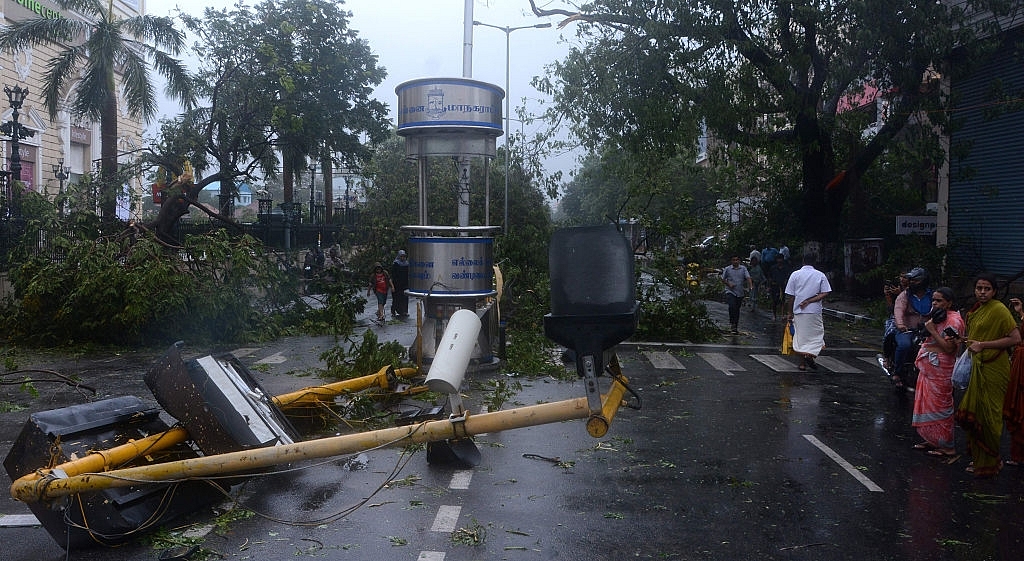Insta
Here’s How Two ISRO Satellites Saved 10,000 Lives During Cyclone Vardah

Indian resident stand near debris on a street in Chennai after Cyclone Vardah. (STR/AFP/Getty Images)
Data provided by two satellites - Insat-3DR and SCATSAT-1- helped the Indian Space Research Organisation save as many as 10,000 lives in Tamil Nadu and the adjoining states when Cyclone Vardah unleashed its fury.
Insat-3DR is a meteorological (weather) satellite launched on 8 September using the three-stage Geosynchronous Satellite Launch Vehicle (GSLV). It is equipped with 6-channel imager and a 19-channel sounder, as well as search and rescue information and message relay. SCATSAT-1, launched on 26 September using the four-stage Polar Satellite Launch Vehicle (PSLV), provides weather forecasting, cyclone prediction, and tracking services.
Here is how it worked:
- Insat 3DR and SCATSAT-1 provided important data and imagery and helped in studying the nature of this cyclone.
- Using the data and imagery, the concerned agencies prepared a forecast and predicted the movement pattern of the cyclone, wind speed, etc.
- This forecast, in turn, was used by National Disaster Response Force to plan and conduct rescue operations.
Support Swarajya's 50 Ground Reports Project & Sponsor A Story
Every general election Swarajya does a 50 ground reports project.
Aimed only at serious readers and those who appreciate the nuances of political undercurrents, the project provides a sense of India's electoral landscape. As you know, these reports are produced after considerable investment of travel, time and effort on the ground.
This time too we've kicked off the project in style and have covered over 30 constituencies already. If you're someone who appreciates such work and have enjoyed our coverage please consider sponsoring a ground report for just Rs 2999 to Rs 19,999 - it goes a long way in helping us produce more quality reportage.
You can also back this project by becoming a subscriber for as little as Rs 999 - so do click on this links and choose a plan that suits you and back us.
Click below to contribute.
Latest